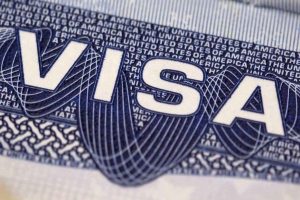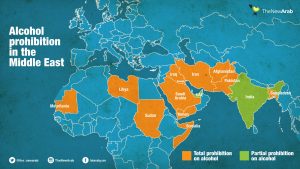• What is Intellectual Property?
Intellectual property (IP) is a category of property that includes intangible creations of the human intellect. There are many types of intellectual property, and some countries recognize more than others. The most well-known types are copyrights, patents, trademarks, and trade secrets.
Intellectual property law deals with the rules for securing and enforcing legal rights to inventions, designs, and artistic works. Just as the law protects ownership of personal property and real estate, so too does it protect the exclusive control of intangible assets. The purpose of these laws is to give an incentive for people to develop creative works that benefit society, by ensuring they can profit from their works without fear of misappropriation by others.
• Intellectual property rights
Intellectual property rights include the following:
Patents
A patent is a form of right granted by the government to an inventor or their successor-in-title, giving the owner the right to exclude others from making, using, selling, offering to sell, and importing an invention for a limited period of time, in exchange for the public disclosure of the invention. An invention is a solution to a specific technological problem, which may be a product or a process and generally has to fulfill three main requirements: it has to be new, not obvious and there needs to be an industrial applicability. To enrich the body of knowledge and stimulate innovation, it is an obligation for patent owners to disclose valuable information about their inventions to the public.
Copyright
A copyright gives the creator of an original work exclusive rights to it, usually for a limited time. Copyright may apply to a wide range of creative, intellectual, or artistic forms, or “works”. Copyright does not cover ideas and information themselves, only the form or manner in which they are expressed.
Industrial design rights
An industrial design right (sometimes called “design right” or design patent) protects the visual design of objects that are not purely utilitarian. An industrial design consists of the creation of a shape, configuration or composition of pattern or color, or combination of pattern and color in three-dimensional form containing aesthetic value. An industrial design can be a two- or three-dimensional pattern used to produce a product, industrial commodity or handicraft. Generally speaking, it is what makes a product look appealing, and as such, it increases the commercial value of goods.
Plant varieties
Plant breeders’ rights or plant variety rights are the rights to commercially use a new variety of a plant. The variety must amongst others be novel and distinct and for registration the evaluation of propagating material of the variety is considered.
Trademark
A trademark is a recognizable sign, design or expression which distinguishes products or services of a particular trader from similar products or services of other traders.
Trade dress
Trade dress is a legal term of art that generally refers to characteristics of the visual and aesthetic appearance of a product or its packaging (or even the design of a building) that signify the source of the product to consumers.
Trade Secrets
A trade secret is a formula, practice, process, design, instrument, pattern, or compilation of information which is not generally known or reasonably ascertainable, by which a business can obtain an economic advantage over competitors and customers. There is no formal government protection granted; each business must take measures to guard its own trade secrets (e.g., Formula of its soft drinks is a trade secret for Coca-Cola.)
• Object of Intellectual Property Law
The main purpose of intellectual property law is to encourage the creation of a wide variety of intellectual goods for consumers. To achieve this, the law gives people and businesses property rights to the information and intellectual goods they create, usually for a limited period of time. Because they can then profit from them, this gives economic incentive for their creation. The intangible nature of intellectual property presents difficulties when compared with traditional property like land or goods. Unlike traditional property, intellectual property is indivisible; an unlimited number of people can “consume” an intellectual good without it being depleted. Additionally, investments in intellectual goods suffer from problems of appropriation; while a landowner can surround their land with a robust fence and hire armed guards to protect it, a producer of information or an intellectual good can usually do very little to stop their first buyer from replicating it and selling it at a lower price. Balancing rights so that they are strong enough to encourage the creation of information and intellectual goods but not so strong that they prevent their wide use is the primary focus of modern intellectual property law.
By exchanging limited exclusive rights for disclosure of inventions and creative works, society and the patentee/copyright owner mutually benefit, and an incentive is created for inventors and authors to create and disclose their work. Some commentators have noted that the objective of intellectual property legislators and those who support its implementation appears to be “absolute protection”. “If some intellectual property is desirable because it encourages innovation, they reason, more is better. The thinking is that creators will not have sufficient incentive to invent unless they are legally entitled to capture the full social value of their inventions”. This absolute protection or full value view treats intellectual property as another type of “real” property, typically adopting its law and rhetoric.
• Intellectual Property Law in Iran
Iran is a member of the WIPO (World Intellectual Property Organization) since the year 2001. Iran joined the Convention for the Protection of Industrial Property (Paris Convention) in 1959. In December 2003 Iran became a party to the Madrid Agreement and the Madrid Protocol for the International Registration of Marks. In 2005 Iran joined the Lisbon Agreement for the Protection of Appellations of Origin and their International Registration, which ensures the protection of geographical names associated with products.
Iran is not yet a member of any convention regarding the Copyright.
Law for the Protection of Authors, Composers and Artists Rights
Iran has a legal code to protect the proprietary and intellectual rights of works produced inside Iran called “Law for the Protection of Authors, Composers and Artists Rights”, dated in the year 1970.
On August 2010, Iran’s Islamic Consultative Assembly passed a reformation of article 12 of Law for the Protection of Authors, Composers and Artists Rights and increased the copyright length based on author’s death to 50 years after death of author; this law only applies to works that were still in protection when the law passed on August 2010.
Law of Registration of Marks and Patents
The Iranian Law of Registration of Marks and Patents of 1931 stipulates that a trademark is any type of logo, design, picture, number, letter, word, seal, wrapper, etc. that is adopted to identify and distinguish goods and services. The law provides for registration of various types of marks chosen to identify industrial, commercial or agricultural products and goods. It also provides for registration of service marks. The essential requirement is that the mark presented for registration should be distinctive.
Electronic Commerce Law
The Iranian Parliament adopted the Electronic Commerce Law in 2004. Articles 62–66 of this law specify that Iran’s existing intellectual-property laws apply to all electronic transactions. Articles 62 and 63 deal with the protection of authors’ rights; Articles 64 and 65 ensure the protection of trade secrets; and Article 66 protects trademarks and domain names.
• Iran and WTO (World Trade Organization)
Iran’s government has not agreed to be bound by WTO copyright laws, Iran may change this status if and when it becomes a full member of WTO, as WTO members are encouraged to abide by WTO copyright regulations. However, the United States has previously vetoed Iran’s ascension to the WTO 22 times, and as of 2007 actively refuses to support Iran’s full membership in the WTO. Thus, as a matter of reciprocity, Iran has determined that its interests are not served by observing WTO copyright treaties, and has thus exercised its sovereign right not to alter its laws, thereby making certain foreign copyrights unenforced by Iranian authorities, in theory, or in practice.








